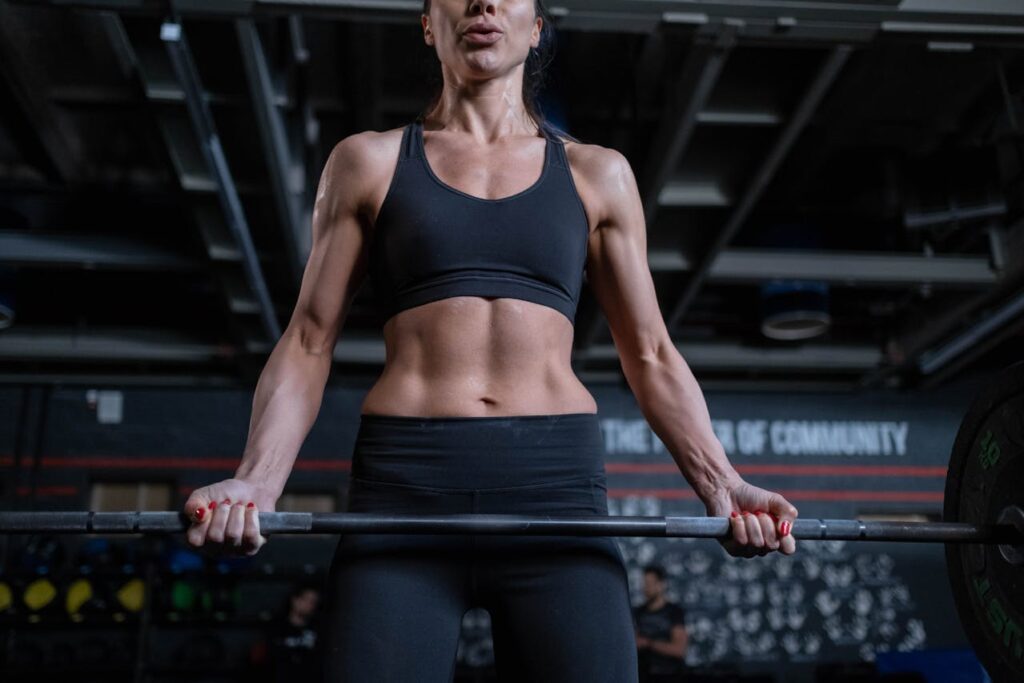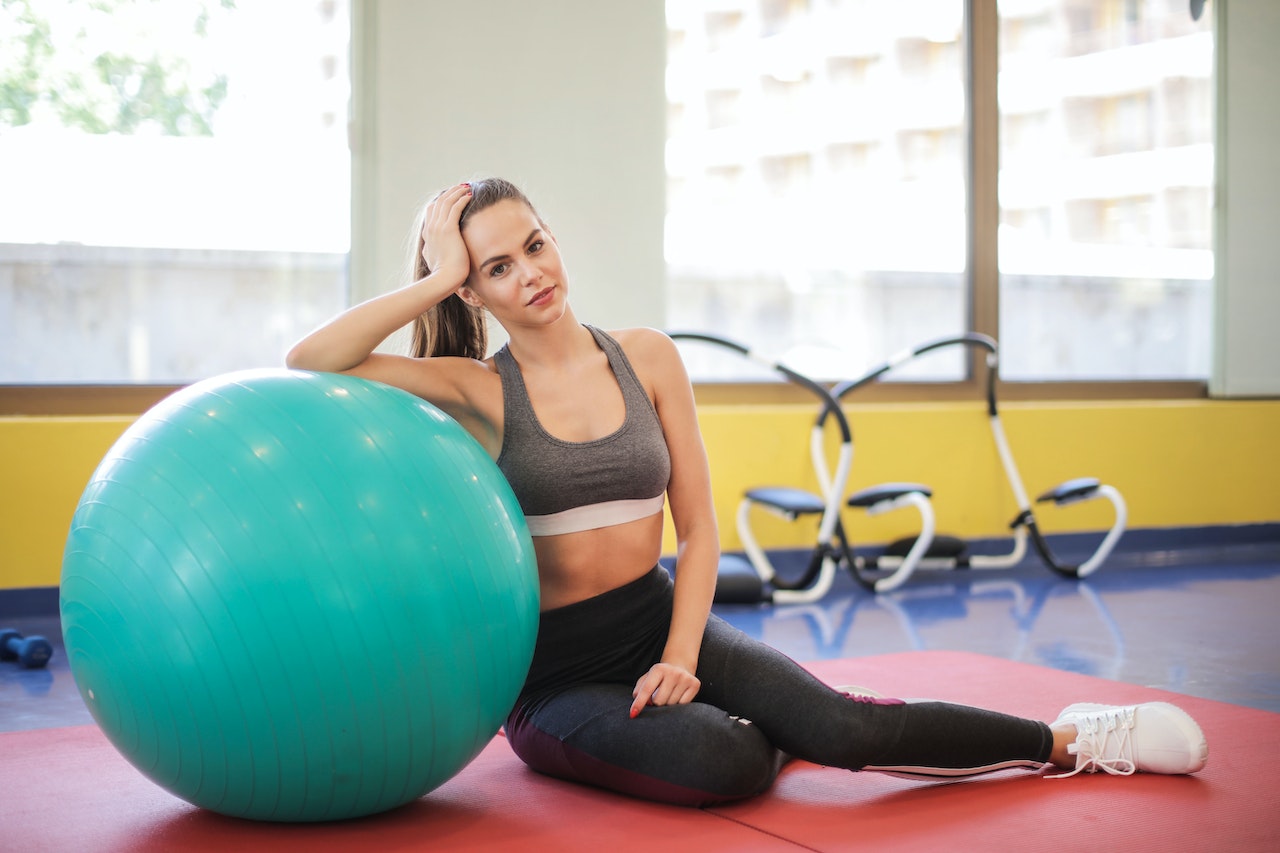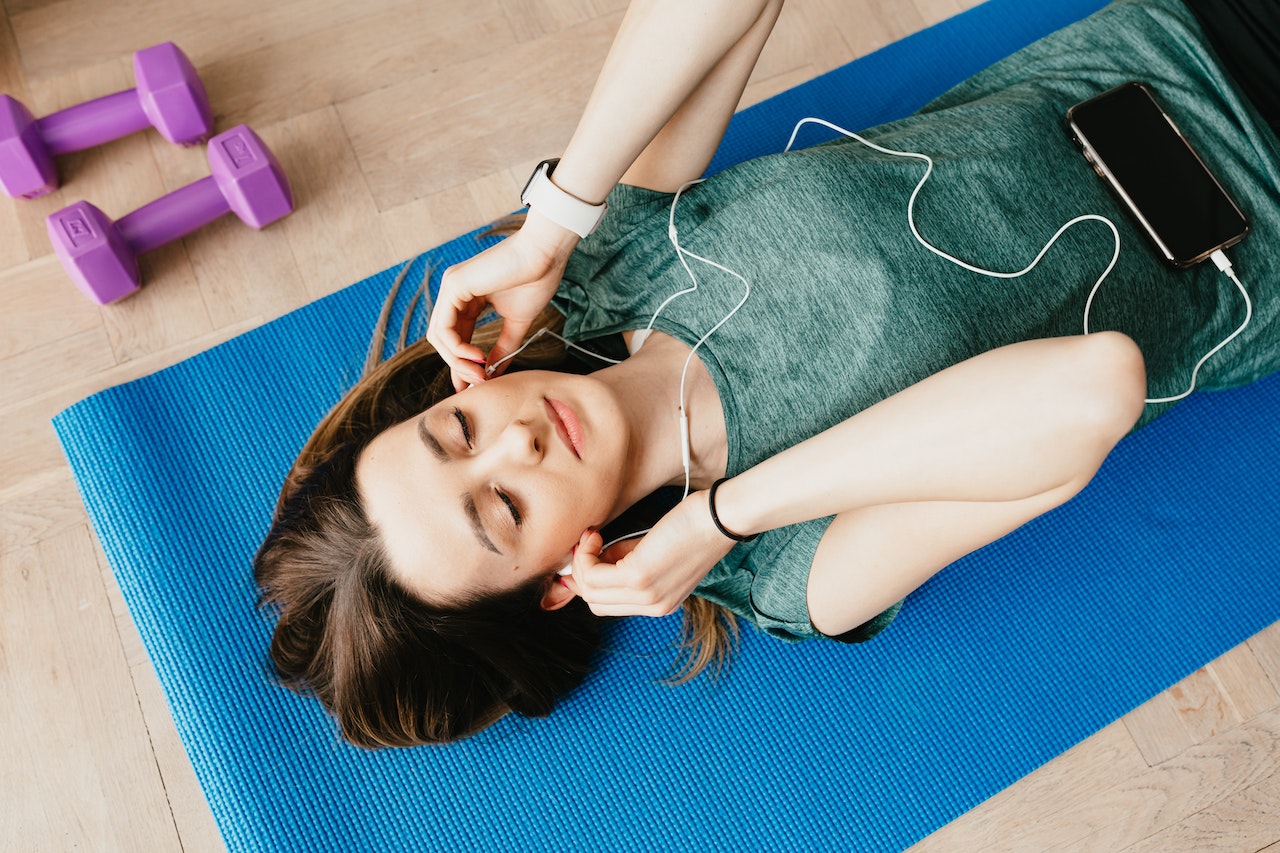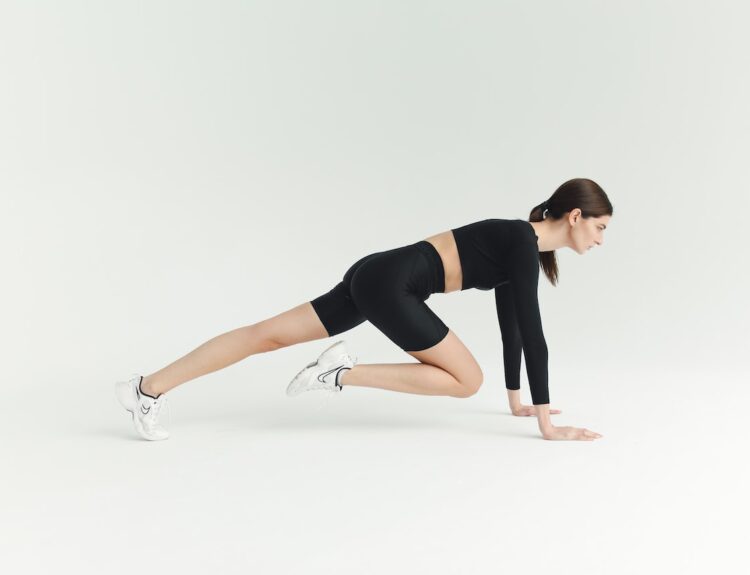Lateral raise alternative exercises offer diverse options for individuals looking to build strong, well-defined shoulders without the discomfort or limitations associated with traditional lateral raises. Whether you’re experiencing pain during lateral raises, want to prevent injury, or seek to add variety to your workout routine, these exercises provide effective solutions for targeting the shoulder muscles. Explore these alternatives to enhance shoulder strength and stability while ensuring a safer and more enjoyable fitness experience.
Explore lateral raise alternative exercises to build strong, well-defined shoulders without pain or discomfort.
In this article:
- Why Consider Lateral Raise Alternatives for Your Shoulder Workout?
- Choosing the Best Lateral Raise Alternatives for Your Fitness Level
- Top Lateral Raise Alternative Exercises for Maximum Shoulder Strength
- Additional Tips for Safe and Effective Shoulder Workouts
WHY CONSIDER LATERAL RAISE ALTERNATIVES FOR YOUR SHOULDER WORKOUT?
Lateral raises are a popular exercise for targeting the deltoid muscles, especially the lateral or middle portion of the shoulder. However, despite their widespread use, traditional lateral raises may not be the best option for everyone. Some individuals experience discomfort or tingling during this exercise, often due to improper form or pre-existing shoulder issues. This discomfort can limit the effectiveness of workouts and even increase the risk of injury over time.
One primary reason to consider lateral raise alternatives is to ensure a balanced shoulder workout that engages all parts of the shoulder muscles without causing strain. Traditional lateral raises primarily target the lateral deltoids, potentially leading to muscle imbalances if not complemented by exercises that work the anterior and posterior deltoids. By incorporating alternative exercises, you can achieve a more comprehensive shoulder workout that promotes balanced muscle development.
Additionally, lateral raise alternatives can be gentler on the joints, making them ideal for individuals with past shoulder injuries or mobility issues.
CHOOSING THE BEST LATERAL RAISE ALTERNATIVES FOR YOUR FITNESS LEVEL
Selecting the right lateral raise alternatives starts with understanding your fitness level and personal goals.
For Beginners: Focus on building foundational strength and mastering proper form. Resistance Band Lateral Raises are an excellent choice, providing controlled resistance that minimizes strain and allows for better technique. The Seated Dumbbell Shoulder Press is also beneficial, as it helps build strength in the deltoids with less pressure on the joints.
For Intermediate Fitness Enthusiasts: Consider more challenging exercises that enhance muscle activation and endurance. The Cable Lateral Raise is ideal for improving shoulder definition, as it provides consistent tension throughout the movement. The Front Raise is another effective option, targeting the anterior deltoid and promoting balanced shoulder development.
For Advanced Athletes: Exercises like the Arnold Press and Bent-Over Dumbbell Reverse Fly offer comprehensive shoulder engagement. These movements target multiple deltoid heads, ensuring well-rounded muscle development and increased shoulder stability.
When choosing exercises, always consider any existing injuries or limitations. Opt for movements that are comfortable and allow you to maintain proper form.
TOP LATERAL RAISE ALTERNATIVE EXERCISE FOR MAXIMUM SHOULDER STRENGTH
Achieving maximum shoulder strength requires a well-rounded approach that targets the deltoid muscles from various angles. Incorporating various exercises is crucial to diversify your routine and achieve optimal results. The following lateral raise alternatives offer fantastic options for building shoulder strength, helping you enhance muscle development while providing effective variations to keep your workouts fresh and challenging.
Resistance Band Lateral Raise: Portable and Effective Shoulder Exercise
The Resistance Band Lateral Raise is an excellent exercise for targeting the lateral deltoids or the middle part of your shoulder muscles. It’s perfect for those seeking to build shoulder strength and definition without needing heavy equipment. It’s a convenient and effective workout option for home and gym settings.
Equipment Needed: Resistance band
Instructions:
Starting Position:
- Stand with your feet shoulder-width apart and place the resistance band under both feet for stability.
- Hold one end of the resistance band with an overhand grip in each hand.
- Let your arms hang down by your sides with a slight bend in your elbows, keeping your core engaged and shoulders relaxed.
Execution:
- Inhale deeply to prepare and stabilize your core.
- Exhale as you slowly lift your arms out to the sides, raising them until they are parallel to the ground or slightly higher, forming a “T” shape.
- Keep your elbows slightly bent and your wrists neutral throughout the movement.
- Focus on squeezing your lateral deltoids at the top of the movement while maintaining control and tension.
Return: Inhale as you slowly lower your arms back to the starting position, ensuring the movement remains controlled and deliberate. Avoid letting the band snap back too quickly to maintain muscle engagement.
Repetitions: Perform 10-15 repetitions for 3-4 sets, adjusting the band’s resistance to match your strength level while maintaining proper form.
Dumbbell Shoulder Press: A Versatile Lateral Raise Alternative
The Dumbbell Shoulder Press is fundamental for building shoulder strength and improving upper-body stability. It effectively targets the deltoids, triceps, and upper chest, making it a versatile alternative to lateral raises.
Equipment Needed: Dumbbells, optional bench (for seated press)
Instructions:
Starting Position:
- Seated Version: Sit on a bench with back support, feet flat on the floor, and your core engaged. Hold a dumbbell in each hand at shoulder height, palms facing forward. Bend your elbows to approximately 90 degrees and position them slightly in front of your shoulders.
- Standing Version: Stand with your feet shoulder-width apart, knees slightly bent, and core engaged. Hold the dumbbells at shoulder height with palms facing forward and elbows bent.
Execution:
- Inhale deeply and brace your core.
- Press the dumbbells upward by extending your arms, bringing them together overhead without locking your elbows.
- Keep the movement smooth and controlled, avoiding jerking or sudden movements.
- Pause briefly at the top of the movement to feel the engagement in your shoulder muscles.
Return:
- Slowly lower the dumbbells back to the starting position at shoulder height, maintaining control and alignment.
- Exhale as you lower the weights, focusing on keeping your shoulders down and away from your ears.
Repetitions: Perform 8-12 repetitions per set for 3-4 sets, adjusting the weight according to your strength and fitness level.
Cable Lateral Raise: Controlled Movement for Optimal Muscle Activation
The Cable Lateral Raise is an excellent exercise for targeting the lateral deltoids. It provides continuous tension throughout the movement, which promotes optimal muscle activation and control. Unlike traditional lateral raises with dumbbells, the cable machine offers consistent resistance, aiding in better muscle engagement and balanced development.
Equipment Needed: Cable machine with a single-handle attachment
Instructions:
Setup:
- Adjust the pulley to the lowest position on the cable machine and attach a single handle.
- Stand sideways to the machine with your feet shoulder-width apart.
- Grasp the handle with the hand farthest from the machine using an overhand grip.
- Keep your other hand on your hip or hold the machine for stability.
Starting Position:
- Step slightly away from the machine to create tension on the cable.
- Stand upright with a slight knee bend and maintain a neutral spine.
- Extend your arm downward in front of your body with a slight bend in the elbow.
- Engage your core to maintain stability.
Execution:
- Exhale and slowly raise your arm to the side until it reaches shoulder height. Keep your elbow slightly bent and lead the movement with your shoulder rather than your wrist.
- Control the movement and focus on contracting the lateral deltoid.
- Pause briefly at the top of the movement to feel the tension in the shoulder.
Return: Inhale as you slowly lower the handle back to the starting position, maintaining control and tension in the shoulder.
Repetitions: Perform 10-15 repetitions per side for 3-4 sets.
Front Raise: Focusing on Anterior Deltoid Strength
The Front Raise is a focused isolation exercise that targets the anterior deltoids, or the front part of the shoulder. This exercise is ideal for developing shoulder strength and definition, particularly in the anterior region. Incorporating front raises into your routine can help create balanced shoulder musculature, enhancing both aesthetics and functional strength.
Equipment Needed: Dumbbells or a barbell
Instructions:
Starting Position:
- Stand with your feet shoulder-width apart and your knees slightly bent for stability.
- Hold a dumbbell in each hand (or a barbell with both hands) at arm’s length in front of your thighs, with your palms facing your thighs (overhand grip).
- Engage your core, keep your chest up, and relax your shoulders.
Execution:
- Inhale deeply and stabilize your core.
- Exhale as you slowly lift the weights in front of you, keeping your arms straight with a slight bend in the elbows to reduce joint stress.
- Raise the weights until your arms are parallel to the ground, ensuring the movement is controlled and smooth.
- Maintain tension in your shoulders, avoiding any momentum or swinging.
Return: Inhale as you slowly lower the weights back to the starting position, maintaining control throughout the descent. Ensure your shoulders remain relaxed and avoid letting them shrug upwards.
Repetitions: Perform 10-15 repetitions for 3-4 sets, choosing a weight that challenges you while maintaining proper form.
Arnold Press: Engaging All Heads of the Deltoid
The Arnold Press is a dynamic shoulder exercise that targets all three heads of the deltoid muscles: the anterior, lateral, and posterior. Named after the legendary bodybuilder Arnold Schwarzenegger, this exercise provides a comprehensive approach to shoulder development, promoting balanced muscle growth and strength.
Equipment Needed: Dumbbells, optional bench (for seated press)
Instructions:
Starting Position:
- Seated Version: Sit on a bench with back support, feet flat on the floor, and your core engaged. Hold a dumbbell in each hand with your arms bent and palms facing you at shoulder height.
- Standing Version: Stand with your feet shoulder-width apart, knees slightly bent, and core braced. Hold the dumbbells in front of your shoulders, palms facing inward.
Execution:
- Inhale deeply and engage your core to stabilize your body.
- Rotate your palms outward as you press the dumbbells overhead. As you extend your arms, your palms should face forward.
- Ensure that your elbows move in a smooth, controlled arc, keeping a slight bend at the top to maintain muscle tension.
Return: Reverse the motion by slowly lowering the dumbbells back to the starting position, rotating your palms inward until they face you again at shoulder height. Exhale as you lower the weights, keeping your shoulders down and relaxed.
Repetitions: Perform 8-12 repetitions for 3-4 sets.
Bent-Over Dumbbell Reverse Fly: Building Rear Deltoid and Upper Back Strength
The Bent-Over Dumbbell Reverse Fly is an effective isolation exercise targeting the rear deltoids and upper back muscles. This movement is ideal for developing shoulder balance and improving posture by strengthening the often-neglected upper back muscles.
Equipment Needed: Dumbbells
Instructions:
Starting Position:
- Stand with your feet shoulder-width apart and knees slightly bent for balance.
- Hold a dumbbell in each hand with an overhand grip.
- Bend forward at the hips, keeping your back straight and core engaged until your torso is almost parallel to the ground.
- Allow your arms to hang down naturally from your shoulders, with your palms facing each other.
Execution:
- Inhale and brace your core for stability.
- Exhale as you lift the dumbbells outward and upward in an arc, keeping your elbows slightly bent.
- Raise the weights until your arms are parallel to the floor, squeezing your shoulder blades together at the top of the movement.
- Keep the motion controlled and avoid using momentum.
Return: Inhale as you slowly lower the dumbbells back to the starting position, maintaining control and muscle tension. Ensure that your shoulders remain relaxed and don’t shrug during the movement.
Repetitions: Perform 10-15 repetitions for 3-4 sets, using a weight that allows you to maintain proper form throughout the exercise.
Face Pulls: Enhancing Shoulder Stability and Health
Face Pulls are excellent exercises for targeting the posterior deltoids, upper back, and rotator cuff muscles. This exercise is particularly beneficial for individuals who spend long hours at a desk or are prone to forward shoulder posture.
Equipment Needed: Cable machine with rope attachment
Instructions:
Starting Position:
- Set the cable machine to an upper height, approximately at eye level, and attach the rope handle.
- Stand with your feet shoulder-width apart, facing the cable machine. Grab the rope handles with an overhand grip, with your thumbs pointing backward.
- Step back to fully extend your arms, maintaining a slight bend in your knees and a stable, athletic stance.
- Engage your core, keep your chest up, and slightly retract your shoulder blades to stabilize your shoulders.
Execution:
- Inhale deeply and brace your core for stability.
- Exhale as you pull the rope toward your face, leading with your elbows and keeping them high.
- Focus on squeezing your shoulder blades together as you pull, ensuring that your elbows remain at shoulder height throughout the movement.
- At the peak of the contraction, your hands should be near your forehead, with the rope handles on either side of your face.
Return: Inhale as you slowly extend your arms back to the starting position, maintaining muscle tension and control throughout the movement. Avoid letting the weights or bands snap back quickly, as this can compromise form and reduce muscle engagement.
Repetitions: Perform 12-15 repetitions for 3-4 sets.
ADDITIONAL TIPS FOR SAFE AND EFFECTIVE SHOULDER WORKOUTS
- Warm-Up: Begin with a dynamic warm-up, including arm circles and stretching exercises, to prepare your joints and muscles for more intense activity. It will help prevent injuries and ensure optimal performance during your workout.
- Form Over Weight: Prioritize proper form over lifting heavy weights. Controlled movements with slow and steady execution engage the shoulder muscles more effectively and reduce the risk of injury. Gradually increase the weight and resistance as your strength improves, ensuring each progression is well-managed.
- Balanced Development: Incorporate a balanced mix of exercises that target all three heads of the deltoid—anterior, medial, and posterior—to ensure symmetrical muscle development.
- Listen to Your Body: Pay attention to any pain or discomfort. Shoulder joints are delicate and prone to overuse injuries, so it’s crucial to rest adequately between workouts and avoid overtraining.
_____
Lateral raise alternative exercises are a fantastic addition to any fitness routine, offering versatile options for enhancing shoulder strength and stability. These exercises allow you to work on different parts of the shoulder muscles, ensuring comprehensive muscle development without the discomfort that traditional lateral raises might cause. Try these alternatives to elevate your shoulder workouts and enjoy a more rewarding and fulfilling fitness journey.
This post may contain affiliate links. You can read the affiliate disclosure here.








